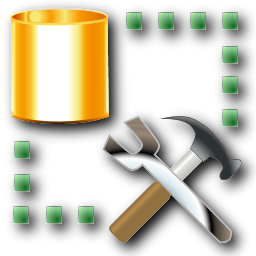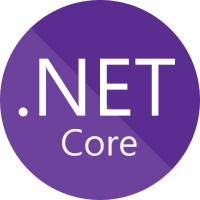Basics of SQL Commands
SQL Commands: An Overview
SQL commands are a set of instructions used to interact with the database like SQL Server, MySql, Oracle, etc. SQL commands are responsible for creating and doing all the manipulation on the database. These are also responsible for giving/taking out access rights to a particular database.
Read More: SQL Server Interview Questions and Answers
SQL Commands Category/Types of SQL Commands
We have different SQL commands for different purposes. We can group Sql Commands into five major categories depending on their functionality.

1. Data Definition Language (DDL)
These SQL commands are used for creating a table, deleting a table, altering a table, and truncating the table. All the commands of DDL are auto-committed i.e. it permanently saves all the changes in the database.
In this category, we have four commands:
- CREATE: It is used to create a new table in the database. Here, you need to specify the name of the table and the name of each column in the table.
Syntax
CREATE TABLE table_name ( column_1 datatype, column_2 datatype, column_3 datatype );Example
CREATE TABLE Employee ( EmployeeID int, EmployeeName varchar(200), PhoneNumber int, Email varchar(255), City varchar(255), Country varchar(255) ); - ALTER: It changes the structure of a table by adding, deleting, or modifying columns in an existing table.
To add a column
Syntax
ALTER TABLE TableName ADD ColumnName Datatype;To delete a column
Syntax
ALTER TABLE TableName DROP COLUMN ColumnName;To modify a column
Syntax
ALTER TABLE TableName ALTER COLUMN ColumnName Datatype;Example
--ADD Column DOB: ALTER TABLE Employee ADD DOB varchar(10); --DROP Column DOB: ALTER TABLE Employee DROP COLUMN DOB; --Add a column DOB and change the data type to Date. ALTER TABLE Employee ADD DOB year; ALTER TABLE Employee ALTER DOB date; - DROP: This command is used to drop an existing table or a database.
Syntax
DROP DATABASE DatabaseName;Example
DROP DATABASE Employee;Syntax
DROP TABLE TableName;Example
DROP Table Employee; - TRUNCATE: This command deletes the information present in the table or all the rows from the table but does not delete the table.
Syntax
TRUNCATE TABLE TableName;Example
TRUNCATE Table Employee; Only with DDL commands, we need to write keywords (like table, procedure, view, index, function) with the syntax of the command.
These commands are used to create/modify the structure of the database object.
Read More: Drop all tables, stored procedures, views, and triggers
Note
2. Data Manipulation Language (DML)
These SQL commands modify the database. The commands of DML are not auto-committed i.e. it can't permanently save all the changes in the database. They can be rolled back.
In this category, we have three commands:
- INSERT: It is used to insert new records into the table or data into the row of a table.
Syntax
INSERT INTO TableName (Column1, Column2, Column3, ...,ColumnN) VALUES (value1, value2, value, ...); or INSERT INTO TableName VALUES (Value1, Value2, Value3, ...);Example
INSERT INTO Employee(EmployeeID, EmployeeName, PhoneNumber, Email, City, Country) VALUES ('01', 'Sourav', '9921321789', 'House No 12', 'Jharkhand', 'India'); INSERT INTO Employee VALUES ('01', 'Sourav', '9921321789', 'House No 12', 'Jharkhand', 'India'); - UPDATE: This command is used to edit rows or modify the records already present in the table.
Syntax
UPDATE TableName SET Column1 = Value1, Column2 = Value2, ... WHERE Condition;Example
UPDATE Employee SET EmployeeNamw = 'Surabhi', City= 'Mumbai' WHERE EmployeeID = 7; - DELETE: It is used to remove one or more rows from a table.
Syntax
DELETE FROM TableName WHERE Condition;Example
DELETE FROM Employee WHERE EmployeeName='Devanshi';
Read More: How to insert values to identity column in SQL Server
Read More:
- Delete Duplicate Rows in SQL Server From a Table
- SQL Server Insert, Retrieve, Update, Delete Operations using Stored Procedures
3. Data Query Language (DQL)
This SQL command is used to fetch/retrieve data from database tables.
In this category, we have only the SELECT command.
- SELECT: These statements are used to fetch data from a database. The data returned is stored in a result table, called the result-set.
Syntax
SELECT Column1, Column2, ...ColumN FROM TableName; --(*) is used to select all from the table SELECT * FROM table_name;Example
SELECT EmployeeID, EmployeeName FROM Employee; --(*) is used to select all from the table SELECT * FROM Employee;
4. Transaction Control Language (TCL)
These SQL commands are used to handle changes affecting the data in the database. We use these commands within the transaction or to make a stable point during changes in the database at which we can roll back the database state if required.
In this category, we have three commands:
- SAVEPOINT: This command is used to save a transaction temporarily. You can roll the transaction back to a certain point without rolling back the entire transaction.
Syntax
SAVEPOINT SAVEPOINTNAME;Example
INSERT INTO Employee VALUES(06, 'Pradnya'); SAVEPOINT S2; - ROLLBACK: This command restores the database to the last committed state.
Syntax
ROLLBACK;Example
ROLLBACK TO S2; SELECT * FROM Employee; - COMMIT: It saves all the transactions to the database.
Syntax
COMMIT;Example
INSERT INTO Employee VALUES(05, 'Sakshi'); COMMIT;
5. Data Control Language (DCL)
These SQL commands are used to implement security on database objects like tables, views, stored procedures, etc. It consists of commands which deal with the user permissions and controls of the database system.
In this category, we have two commands:
- GRANT: This command permits specific users on specific database objects like table, view, etc.
Syntax
GRANT PrivilegeName ON ObjectName TO {UserName |PUBLIC |RoleName} [WITH GRANT OPTION];Here,
- PrivilegeName: It is the privilege/right/access granted to the user.
- ObjectName: Name of a database object like TABLE/VIEW/STORED PROC.
- UserName: Name of the user who is given the access/rights/privileges.
- PUBLIC: To grant access rights to all users.
- RoleName: The name of a set of privileges grouped.
- WITH GRANT OPTION: To give the user access to grant other users with rights.
Example
GRANT SELECT ON Employee TO user1; - REVOKE: This command is used to withdraw the user’s access privileges given by the GRANT command.
Syntax
REVOKE PrivilegeName ON ObjectName FROM {UserName |PUBLIC |RoleName}Example
REVOKE SELECT ON Employee_Info TO user1;
Summary
So, here we gave you a complete description of the basic commands in SQL to work on the database. If you want to gain a practical understanding, you can enroll in our SQL Server Course.
Do you Know?
.NET is gaining popularity day by day, especially after the release of .NET 8. .NET 8 is not only a framework version but much more than that. It redefines the way software applications are built and deployed, enabling developers to meet the evolving demands of modern computing.
Therefore, if you want to upskill yourselves and stand out from others consider our following training programs on .NET.
- .NET Developer Training With Certification
- ASP.NET Core Certification Training
- ASP.NET Core Course
- .NET Solution Architect Certification Training
- Full-Stack .NET Developer Certification Training Program
- Advanced Full-Stack .NET Developer Certification Training
Take our Sqlserver skill challenge to evaluate yourself!

In less than 5 minutes, with our skill challenge, you can identify your knowledge gaps and strengths in a given skill.





